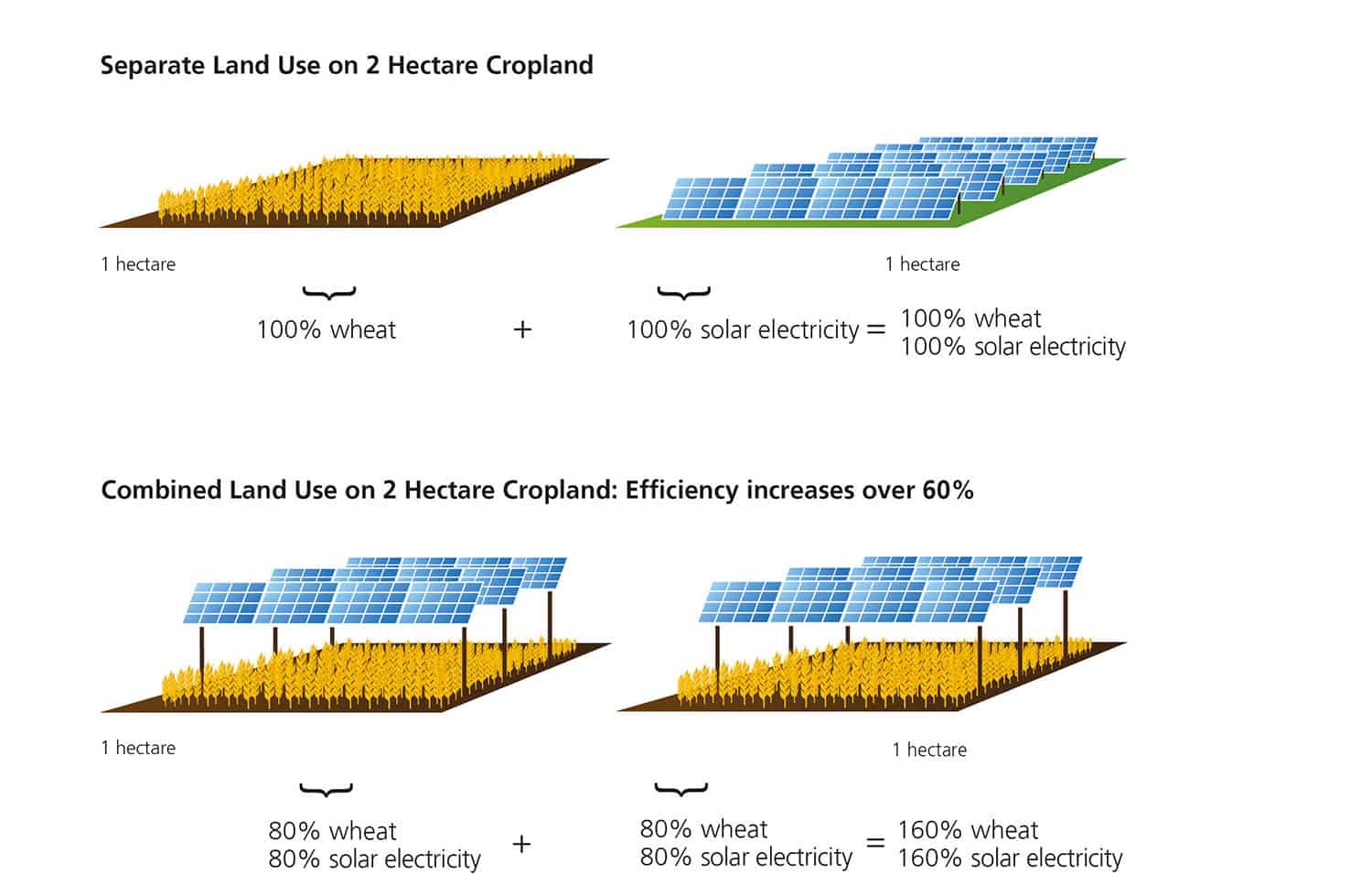
Agrivoltaics, the practice of growing crops under solar panels, is a concept gaining in popularity and real-world application. Though initially pioneered in the early 1980s, researchers Armin Zastrow and Adolf Goetzberger discovered that crops grown under solar panels grew faster and used less water than crops grown in open fields. Since then, the agrivoltaic practice has been studied worldwide to examine its potential benefits to solar energy production and agriculture. Results have been considered promising, as many studies revealed increased crop yields, water usage reductions, and solar panel lifespan and efficiency increases. This article will explore agrivoltaics and discuss its implications for the modern solar industry.
Benefits of Agrivoltaics on Crops
Agrivoltaics can be explained simply by starting with mounting solar panels on stilts above crops, providing shade, and reducing direct sunlight to crops, resulting in healthy growth. The shade provided by the panels can reduce water usage by limiting evapotranspiration (the process by which water vapor rises from plants and soil). Furthermore, the reduced temperature under the panels can help mitigate heat stress, which is particularly important for crops grown in hot and dry regions. The panels can also protect crops from hail and other weather events that can potentially cause significant damage.

Photo Credit: Renewablepedia
Benefits of Agrivoltaics on Solar Panels
In addition to the benefits of agrivoltaics provide to crops, the practice can also benefit the solar panels. When solar panels overheat, their efficiency decreases. Planting crops underneath solar panels increases the amount of ground shade and humidity, lowering the ambient temperature and subsequently enhancing efficiency and energy production.
Agrivoltaics offers a strong upside for the modern solar industry by providing opportunities for farmers to generate additional income by selling the electricity produced by solar panels or leasing their land to solar developers. Additionally, agrivoltaics can help meet the growing demand for renewable energy while addressing some of the challenges of sustainable agriculture. Traditionally, solar farms require large amounts of land, which can cause habitat loss and other environmental impacts. By combining agriculture and solar energy production, agrivoltaic practices can reduce the amount of land required for solar farms, thus reducing the environmental impact. Cornell University recently published research about the potential of agrivoltaics. The research reinforced the farmland conservation and renewable energy generation agrivoltaic systems can provide. Senior Author Max Zhang said agrivoltaic systems offer higher evapotranspiration rates and ground cover through passive cooling that can accommodate various panel heights.
Benefits aside, implementing agrivoltaics requires careful planning, design, and management. The proper crop selection is critical for success because crops that require full sunlight may not be suitable for agrivoltaics. The design and installation of solar panels must also be carefully considered to ensure that they provide sufficient shade to crops while allowing adequate sunlight to the panels.
Agrivoltaics is an innovative practice that requires collaboration between farmers, energy providers, and researchers, along with policies and incentives that promote its adoption. As this practice evolves and innovations emerge, we will keep you updated with some of the latest renewable energy industry-related resources on our website.
Comments
What about tax consequences? In Oregon, the Dept of Revenue reclassifies farm land with solar to highest tax rate (changing tax basis from 'farm' to 'industrial', 'commercial', or 'residential', annihilating any possibility of even breaking even.